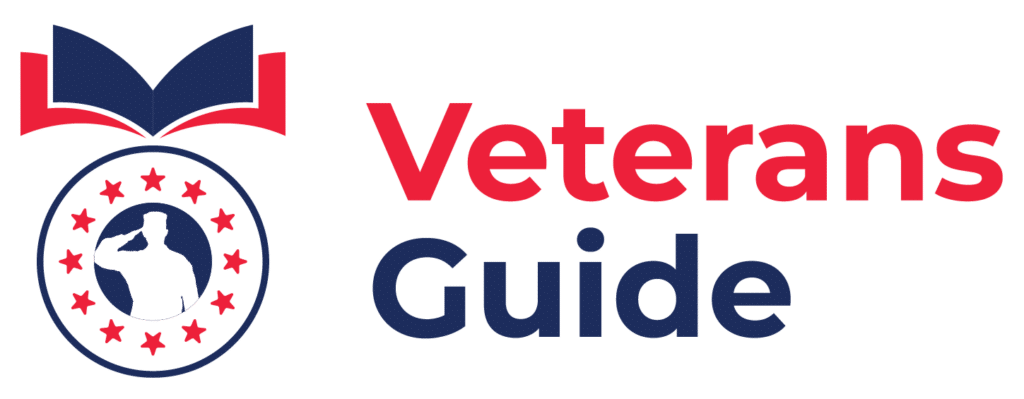VA Home Loan Closing Costs
Buying a home is a significant step that carries substantial financial risks. Fortunately, if you’re a veteran, active duty service member, or surviving spouse, a VA home loan can make that step more affordable. Still, even with the advantages of the VA program—like no down payment requirement and capped fees—there’s one part of the process that often surprises borrowers: closing costs.
All mortgages come with closing costs. Even loans marketed as “no closing cost” simply roll the fees into the loan or shift them elsewhere. VA loans guaranteed by the Department of Veterans Affairs are no exception, but they do come with unique protections that limit what you’ll pay and who pays it. Knowing how these costs work upfront can save you a lot of stress, and in some cases, a lot of money.
This guide breaks down what you need to know about VA home loan closing costs, including typical amounts, who’s responsible for them, seller contributions, and the key differences compared to conventional mortgages. We’ll also look at the VA Funding Fee, explain when you’ll know your final costs, and share tips to maximize your benefits.
On This Page
- How Much Are Closing Costs on a VA Loan?
- Who Pays Closing Costs on a VA Loan?
- Seller Contributions and How They Impact Costs
- Differences Between VA Loan Closing Costs and Conventional Mortgages
- List of Common VA Loan Closing Costs
- Can You Roll Closing Costs Into a VA Loan?
- When Will I Know My Final Closing Costs?
- Maximizing Your VA Loan Closing Cost Benefits
- The Bottom Line
How Much Are Closing Costs on a VA Loan?
On average, VA loan closing costs range between 3% and 5% of the loan amount. So, if you’re purchasing a $250,000 home, you might pay between $7,500 and $12,500 in closing costs. The actual number can vary depending on the lender, your location, and the type property itself.
One of the most appealing aspects of VA loans is that they often come with lower fees than conventional mortgages. That’s because the VA limits what lenders can charge. In other words, while you can’t completely avoid closing costs, they’re usually lighter than what civilian borrowers face.
Another way costs can be reduced is through seller concessions. If the seller agrees to cover some of your expenses, it can significantly cut down what you’ll pay out of pocket at the closing table.
Who Pays Closing Costs on a VA Loan?
Generally, veteran borrowers are responsible for most closing costs. However, the VA program does allow for negotiation with the sellers. Sellers can step in and cover certain expenses, while the VA limits specific fees charged to borrowers.
When purchasing a home with a VA loan, borrowers can save money by negotiating seller concessions. Seller concessions are contributions from the seller that reduce the borrower’s out-of-pocket expenses. In competitive markets, this can be a valuable bargaining chip. However, there are limits on some of these contributions. Whether the limit applies depends on whether the contribution is a closing cost or a seller concession.
The distinction between closing costs and seller concessions is as follows:
- Closing costs: These are standard fees associated with any mortgage, including the appraisal, title insurance, and origination fee. A seller can cover all or part of these if both parties agree.
- Seller concessions: These are extras beyond normal closing costs, such as paying off a veteran’s collection debt, covering prepaid taxes, or buying down the interest rate.
For VA loans, the VA caps seller concessions at 4% of the loan amount. There’s no cap on how much a seller can pay toward basic closing costs.
Seller Contributions and How They Impact Costs
Seller contributions can significantly alleviate the financial burden. Imagine you’re buying that $250,000 home, and your estimated closing costs are $10,000. If the seller agrees to cover $7,000, you’d only bring $3,000 to the table.
Concessions, however, are slightly different. Let’s say you also want the seller to pay for a year’s worth of property taxes and to cover points to lower your interest rate. Those fall under the 4% concession cap, which, in this example, would be $10,000—4% of $250,000.
It’s worth noting that seller concessions are not required. However, they can be negotiated as part of the purchase agreement. Still, they’re a common way Veterans keep their upfront expenses manageable.
Differences Between VA Loan Closing Costs and Conventional Mortgages
VA loans stand apart in several ways. Here are the main differences:
- Origination Fee Cap: Lenders can charge no more than 1% of the loan amount. Conventional loans don’t have this cap, which means borrowers could face much higher fees.
- Non-Allowable Fees: The VA prohibits certain charges, including the lender’s attorney fees, prepayment penalties, and others.
- Funding Fee: Unlike conventional loans, VA loans come with a special one-time fee, unless you’re exempt. This fee helps keep the program running for future veterans.
Due to these protections, VA loan closing fees are often lower overall compared to those of other mortgage types.
List of Common VA Loan Closing Costs
The following are common closing costs for VA home loans:
- VA Funding Fee: This mandatory, one-time charge funds the VA loan program. It ranges depending on whether it’s your first use, the size of your down payment, and the type of loan. For first-time users with no down payment, the rate is 2.3% of the loan amount. If you’ve used the benefit before, it’s 3.6%. Veterans with a service-related disability are exempt. For more details on funding fees and closing costs, visit the VA’s website.
- Origination Fee: Capped at 1% of the loan amount. This is the lender’s charge for processing the loan. Some lenders charge a flat fee, while others itemize smaller fees—either way, the total can’t exceed 1%.
- Appraisal Fees: The VA requires a home appraisal by a VA-approved appraiser. Depending on where you live, fees typically run $400 to $1,200.
- Inspection Fees: Some properties may require termite inspections or checks on the well and septic system. Costs vary based on location and requirements.
- Title Insurance: Lender’s title insurance is typically mandatory, protecting the lender in the event of ownership issues that arise later. You can also purchase an owner’s policy for extra protection.
- Other Possible Costs: These may include a credit report fee, homeowners’ insurance, property taxes, daily interest charges, recording fees, HOA fees, or a home warranty plan.
Can You Roll Closing Costs Into a VA Loan?
You cannot roll most closing costs into a VA loan. The only cost you can roll into a VA loan is the Funding Fee. Doing so increases your loan balance and monthly payments but reduces your upfront expense.
Other closing costs, such as the appraisal fee, inspection fee, and title insurance premium, must be paid at closing. However, this is where seller concessions can be a lifesaver. If negotiated, the seller may cover part or all of these costs, leaving you with less to bring to the table.
When Will I Know My Final Closing Costs?
After you apply and the lender receives property details, you’ll receive a Loan Estimate. This three-page document outlines your likely costs, interest rate, and monthly payment.
Closer to the actual closing date, you’ll get a Closing Disclosure. This five-page document provides the final, itemized costs. Review both carefully. They’re your best tools for making sure there are no surprise charges.
Maximizing Your VA Loan Closing Cost Benefits
VA loans already cut costs compared to other mortgage types, but there are ways to make them even more affordable:
- Negotiate seller concessions early in the homebuying process.
- Review your Loan Estimate carefully and ask your lender to clarify any points that are unclear.
- Shop around for lenders—not all charge the same fees.
- Confirm your eligibility and exemptions. If you have a service-related disability, you may not need to pay the Funding Fee at all. Learn more about getting your Certificate of Eligibility.
For many Veterans, the VA loan program is a once-in-a-lifetime benefit that can save tens of thousands of dollars over the life of a mortgage. By understanding how closing costs work and utilizing every available tool, such as seller concessions, cost caps, and exemptions, you can stretch your benefits as far as possible.
It’s also a good idea to familiarize yourself with VA loan eligibility requirements and understand how factors like loan limits and credit score expectations can affect your application.
The Bottom Line
VA home loan closing costs are designed to be more affordable and transparent than those tied to conventional mortgages. Typically ranging from 3% to 5% of the loan amount, these costs can often be reduced through seller contributions, capped fees, and exemptions, such as the Funding Fee waiver for disabled Veterans.
If you’re a veteran and a first-time homebuyer, explore the different types of VA home loans available and review all the benefits the VA loan program offers. Consult with lenders to learn more about their closing costs and fees.






